|
As we begin this month of August, we trudge into another month of Ordinary Time in the liturgical calendar. That doesn’t mean, however, that we don’t have much to look forward to with feast days this month. August is filled with feast days from saints who lived less than a century ago, all the way to saints from the early Church—from religious to laity, from saints I’ve learned about my whole life, to saints I had never heard of before. Let us take time throughout this month of August to learn about the Christ-filled lives of these powerful saints. Saints who Founded Religious Communities: There are many saints this month who founded religious communities—all of which have had a great impact on the Church. St. Dominic founded the Dominicans, also known as the Order of Preachers, which is a religious order known for their preaching and rich intellectual history. St. Clare of Assisi worked with St. Francis of Assisi and helped found the Poor Clares, a group of contemplative nuns and the second branch of the Franciscans to be founded, just after the Order of Friars Minor. Back in the time of the early church, St. Augustine wrote the Rule of St. Augustine, which became the foundation for the Augustinians. In the 12th century, St. Bernard of Clairvaux helped spread the Cistercian Order, an order of monks and nuns that branched off from the Benedictines and remains strong today. St. Cajetan helped found the Theatines which became a religious order with many bishops and intellectuals in the Church. With the help of St. Francis de Sales, St. Jane Frances de Chantal founded the Visitation Order which was a religious order open to women who had been turned down from other orders for poor health or similar reasons. The French mystic St. John Eudes founded two religious orders in the 1600s, both following St. John Eudes’ special devotion to the Sacred Hearts of Jesus and Mary. More recently, in the 18th century, St. Alphonsus Liguori founded the Redemptorists, a religious community with a special devotion to Our Lady of Perpetual Help. In the 19th century, French priest St. Peter Julian Eymard helped found two religious orders, both with a special devotion to the Blessed Sacrament. At first, I found this list quite overwhelming. These saints founded and/or helped spread their religious orders, something I can’t even fathom, especially in our pandemic-affected world today. But then I recognized the beauty that comes to the Church as a result of this wide range of religious communities. Each community is called to follow their own unique charism, all while growing closer to Christ and bringing Him to others. After sitting with this, I realized that there is beauty in the lives of each of these saints and in how the Church works in many ways, through many charisms, to help lead everyone to a life of holiness. Martyrs in the Month: In a six day stretch next week, we will celebrate three well-known martyrs in the Church. Back in the early Church, St. Lawrence was killed and is famous for his quips as he was being grilled to his death—showing his faith in Christ to the end. Much more recently, St. Teresa Benedicta of the Cross was a Discalced Carmelite nun who was killed at the Auschwitz concentration camp during World War II because of her Jewish heritage. Similarly, St. Maximillian Kolbe was martyred at Auschwitz, giving his life in place of another prisoner, and was thus bestowed the title “martyr of charity”. While we may not face martyrdom like these saints, we can learn from how they trusted Christ and pray for their intercession in our lives. Saints and Their Country: Later this month, we will celebrate the feast days of three saints who are known by their primary locations: St. Stephen of Hungary, St. Louis of France, and St. Rose of Lima. These saints all lived incredible lives, all very authentic to the community in which they lived. As we progress through this month, these saints can serve as role models for us in how we can follow Christ and bring others to Him in whatever region we find ourselves. As we walk through this August, let us look to the lives of the saints to learn to be saints right where God has called us to be through whatever charism He calls us to. To learn more about the saints, visit our Catholic Feast Days Website by clicking here. To view a calendar of the feast days in August, and each month, click here.
2 Comments
What image comes to mind when you hear the word conversion? To many, the words of those who encountered Jesus in his earthly ministry may come to mind. Conversion may sound like the cry of the Samaritan woman in John’s Gospel: “Come and see a man who told me everything I have done. Could he possibly be the Messiah?” (John 4:29). Perhaps Caravaggio’s The Conversion on the Way to Damascus rises to the surface, an expression of a dramatic scene illustrated with a few artistic liberties. Still, we may associate conversion with a story like St. Augustine: a turning from a former life of debauchery or sin to a life lived in pursuit of God. Because of the art that is important to our faith, cultures, and families, we may assume conversion to be a dramatic, “lightning-bolt” moment: brief, intense, supernatural, and immediately transformative. While our tradition does speak of the reality of dramatic conversions, conversion itself is often more gradual and organic. For those of us whose lives have not yet become hagiography, what does conversion look like? More particularly, what does conversion look like for us in this particular moment, in our current context of history and life? First of all, what is conversion? Conversion, according to the Catechism of the Catholic Church, is “a radical reorientation of our whole life, a return, a conversion to God with all our heart, an end of sin, a turning away from evil, with repugnance toward the evil actions we have committed. At the same time it entails the desire and resolution to change one's life, with hope in God's mercy and trust in the help of his grace” (CCC, #1431). It is “first of all a work of the grace of God who makes our hearts return to him,” and is not “aim[ed] first at outward works, ‘sackcloth and ashes,’ fasting and mortification, but at the conversion of the heart, interior conversion” (CCC #1432 and #1430). In other words, conversion is a movement away from sin, a re-ordering of priorities with Christ re-categorized as the center of our lives. It is something that occurs through supernatural grace and the initiative of the Holy Spirit, first changing our hearts and minds, but through our cooperation, manifests itself in everyday actions or “visible signs” (CCC #1430). The process of conversion, for most of us, is not instantaneous; rather, it usually a slow, gradual process that involves daily recommitment and practice. In a 2017 audience, Pope Francis reflected on the gradualness of conversion this way: “Avoiding evil and learning to do good: this is the rule of conversion. Because being converted doesn’t come from a fairy who converts us with a magic wand: No! It’s a journey. It’s a journey of avoiding and of learning.” As Pope Francis highlights, conversion can be as simple as learning something new. It involves openness to re-orienting our priorities, changing our opinions, reconsidering our worldview, and engaging with the truth. However, the gradual process of conversion doesn’t start and end with us; it is always oriented towards the building up of humanity and being brought more deeply into right relationship with God and one another. Conversion always has a social and relational impact. As the Catechism of the Catholic Church notes, “Conversion is accomplished in daily life by gestures of reconciliation, concern for the poor, the exercise and defense of justice and right, by the admission of faults to one's brethren, fraternal correction, revision of life, examination of conscience, spiritual direction, acceptance of suffering, endurance of persecution for the sake of righteousness” (#1435). Our actions towards our neighbors, God, and the world around us is where our conversion is realized and bears “fruit that will last” (John 15:16). Conversion has both vertical and horizontal dimensions to it; it calls us to recognize ourselves as Beloved children of God, and, at the same time, recognize this Belovedness in our neighbors more clearly as a result of the transforming love of God. We are called to learn more, think more deeply, and consider more thoroughly, especially when the common good of our neighbor is at stake: “It follows that Christian conversion demands reviewing especially those areas and aspects of life ‘related to the social order and the pursuit of the common good.’” (Evangelii Gaudium, 182). When we say that the Christian life is one of on-going conversion, we simply mean this: we are called to learn of our and our neighbors’ Belovedness over and over again and re-commit to it each day. This learning is not merely intellectual, but is also a deep education and formation of the heart and soul that spills over into our concrete lives. In our period of history and social context, conversion may be less dramatic and more gradual for most of us than some of the saints and figures of our faith. However, that does not mean that it is any less exciting! Our personal process of conversion can start as the size of a mustard seed, and grow into a deeply authentic faith that changes the world: “An authentic faith – which is never comfortable or completely personal – always involves a deep desire to change the world, to transmit values, to leave this earth somehow better that we found it” (Evangelii Gaudium, 183). What is going on in our world and in the lives of our neighbors that is calling us to conversion? What new things or viewpoints are we being called to learn or unlearn to realize our Belovedness and the Belovedness of our neighbor? How can we be more open to living a life of ongoing conversion?
If you’re used to communicating with others via text message, then you’ve probably, at some point, received a message and interpreted it out of context. A curt reply with a period at the end could be misinterpreted as either passive aggressive or as an irritated response. This happens to me occasionally, and I always have to remember that without hearing a person’s message verbally, it can be difficult to understand what they’re really saying or implying. Maya Angelou’s quote rings true here: “Words mean more than what is set down on paper. It takes the human voice to infuse them with deeper meaning.” Our voices add a unique depth and fullness to our communications by revealing emotions, nuances, and subtle meanings more sharply than words alone can communicate. On this feast of the Nativity of St. John the Baptist, I am struck by St. Augustine’s words from this morning's Office of Readings: “Today we remember that Zechariah’s ‘tongue is loosed because a voice is born.’” St. John the Baptist was born to be the final prophetic voice who proclaimed the Word made flesh. Like the Old Testament prophets, John foretells the coming of the Messiah and calls sinners to repentance with words that cut to the heart (Luke 3:1-29). But, unlike the Old Testament prophets, John identifies the Messiah for the first time in salvation history. John points Jesus out and encourages his followers to pursue him (John 1:29-37). He is confident that his cousin is the foretold Christ, and by his proclamation John fulfills the mission of all the prophets as he straddles the boundary of the Old and New Testament. John’s historical mission of giving voice to the Word is also our mission. At our baptism, we were anointed as a priest, prophet, and king. We share uniquely in Jesus’s ministry, and we are called to be lay prophets who proclaim the good news of repentance and redemption. We must, like John the Baptist, spend time coming to know the promises of the Messiah so that we can recognize Him when we see him. And when we see Him present in the sacraments, or when we encounter Him as we are accompanied by a spiritual mentor, or when we experience Him through the fullness of our prayer, we must point Him out for all to see. To fulfill our baptismal call to be prophets of the Gospel of Christ, we must give voice to our experiences of God. John’s words must be our words to the world, “Behold, the Lamb of God.” “Do not be troubled if you do not immediately receive from God what you ask him; for he desires to do something even greater for you, while you cling to him in prayer” -Evagrius Ponticus There are often times in our lives when God doesn’t seem to be answering our prayers. We pray repeatedly for certain people or intentions, sometimes for days, months—and even years—but our prayers seem to go unanswered. When nothing seems to be happening, it is easy to feel weary and disheartened. For the past several years, my husband and I have been praying for a specific situation that has only gotten more frustrating and bleak. At Mass during the first week of the Lenten season, I heard the words of Jesus to his disciples, “Ask and it will be given to you; seek and you will find; knock and the door will be opened to you” (emphasis added). After praying with this reading throughout the week, I heard the following words in my heart: “keep knocking.” I took this as a reminder to persevere in prayer. Whether or not we think God has answered our prayers does not change the fact of who he is: a good Father who knows what we need. Our intention to pray should not spring solely from the fact that we need something, but from our desire to strengthen our relationship with God and to be transformed and conformed to his will in the process. The Catechism summarizes it well when it says, “prayer is a battle” (2725). I’ve found this to be true on multiple fronts. First, it’s a battle to even set apart time to pray each day. It often seems that I don’t have time or that there are so many more important things to do. This year for Lent, I’ve decided to set apart the first 10-15 minutes of my children’s naptime for quiet prayer. This puts to practice a fact I already know intellectually: prayer gives my days purpose and meaning. Another opponent we fight in the battle of prayer is distraction. I often find that as soon as I commit to prayer time, my mind wanders or suddenly races with things to do. It’s normal to experience distraction in prayer. When this happens, simply bring yourself back to the present and don’t give the distraction too much attention. Other times, my prayer life seems dry and dull. It feels hard to pray and I don’t even have words to say. Additionally, we can experience something that might be the hardest of all: seeming silence in response to our prayers. The Catechism extrapolates, “Our battle has to confront what we experience as failure in prayer: discouragement during periods of dryness…disappointment over not being heard according to our own will…To overcome these obstacles, we must battle to gain humility, trust, and perseverance” (2728). Anything of merit is proven in times of hardship: our commitment to marriage, our love for our family, our life of faith, our dedication to a cause or ideal. We are unable to excel in an endeavor if we’ve never practiced. That is why my husband jokes that he will never pray for patience, because he doesn’t want to be presented with opportunities that will invite him to grow in that particular virtue. The Catechism speaks on this as well, “Filial trust is tested - it proves itself - in tribulation” (2734). Occasionally, we might not receive an answer to prayer immediately because the repeated action of prayer will make us grow in some way: in charity, in perseverance, in faith. The Catechism goes on to ask, “Are we asking God for ‘what is good for us?’ Our Father knows what we need before we ask him, but he awaits our petition because the dignity of his children lies in their freedom. We must pray, then, with his Spirit of freedom, to be able truly to know what he wants.” (2736) Perhaps we are praying for something that is not good for us. Or, even more likely, for something that is not best for us. Our prayers may be pure, well-intentioned, and holy, but may only partially supply what we, or the people we’re praying for, need. We often can only see part of the whole picture; our ways are not God’s ways. An example of this can be found in the story of St. Monica, who prayed for her son, Augustine, for 17 years before he was baptized and entered into the Catholic Church. In the midst of her prayers for the conversion of her son, Augustine snuck out of her care and escaped to follow his worldly pursuits in Rome. At the time, this was devastating to Monica, who only saw his continued descent into a life of sin. But it was in Rome that St. Augustine met St. Ambrose—the spirit-filled bishop who was a major catalyst in Augustine’s conversion. This example shows a good prayer that was seemingly unanswered. God did not seem to be “listening” to Monica’s pleas for her son to stay with her. Instead, he used a hopeless situation to bring about an even more powerful encounter that led to Augustine’s salvation. God never fails to hear our prayers. Said again, our prayers are always heard. By praying for something repeatedly, we grow in our charity for others, in our perseverance, and in our faith. St. Augustine himself reminds us of this, “God wills that our desire should be exercised in prayer, that we may be able to receive what he is prepared to give.” The more difficult prayer is not to pray for what we want or think we want, but to pray for God’s will to be done, as Jesus teaches us in the Garden of Gethsemane. The goal of prayer is a deepened relationship with and the love of God. We need prayer because we need God. Prayer is meant to change and transform us to be more like Christ, who lived in complete unity with the will of His Father. As the Catechism reminds us, “Against our dullness and laziness, the battle of prayer is that of humble, trusting, and persevering love” (2742). As we continue to grow in our understanding and practice of prayer this Lent, I invite you to persevere in the “battle” in order to say with Christ, “not as I will, but as you will.” For more resources on Prayer, please click here. My own faith journey has been greatly influenced by the Augustinians – a religious order of friars, joined by seculars and friends, who follow the Rule of St. Augustine. Simply put, Augustine’s Rule invites men and women to “be of one mind and heart on the way to God… [to be] travelers on pilgrimage together, wherein Christ is our constant companion, as well as our way and our goal.” St. Augustine of Hippo is one of the best-known saints in the Catholic Church. Although he was born in the 4th Century, his writings—like Confessions and The City of God—continue to inspire spiritual seekers to this day. For his contributions in theology, Augustine is also considered a Doctor of the Church. Beyond these accolades, Augustine’s personal character and self-proclaimed “restlessness for God” have inspired numerous men and women to take up his search for truth. One of these people is St. Nicholas of Tolentine, whose feast we celebrated on September 10th. Growing up in an Augustinian parish in Staten Island, NY, I knew there were at least a few saints from the Augustinian family, including: Augustine’s mother, St. Monica; St. Rita of Cascia; St. Thomas of Villanova (there’s a basketball-loving university named after him!); and St. Clare of Montefalco. I also knew of a church in the Bronx named St. Nicholas of Tolentine, but I must admit, I knew very little about him. A few years after college, and after some time away from my family parish, I found myself in a state of constant restlessness and spiritual doubt. Desiring a change, I reconnected with my past by joining the Augustinian Volunteers, a year-long volunteer program in which I traveled across the country, lived in intentional community, and learned about the greater Augustinian family. This experience confirmed a special place in my heart for the Augustinian saints, and I have been pleased to learn more about this man Nicholas who “sought for God by means of a deep interior life… [and] the practical love of neighbor.” According to a brief biography, Nicholas “was a simple priest and Augustinian friar who touched the lives of many.” Born to a poor family in Italy in the year 1245, Nicholas became an Augustinian friar at an early age (likely 16 or 18) after being inspired by another Augustinian preacher in his hometown. The Augustinian history states Nicholas was “full of charity towards his brother Augustinians as well as towards the people to whom he ministered. He visited the sick and cared for the needy. He was a noted preacher of the Gospel. He gave special attention to those who had fallen away from the Church. People considered him a miracle worker.” Nicholas fasted often and received visions during his lifetime, including that of angels repeating “to Tolentino,” where he moved and worked for the remainder of his life. In the tradition of Augustinian hospitality, Nicholas is said to have been over-generous in his duties feeding the poor at his monastery; so much so that his superiors asked him to hold back a bit. Nicholas (like many medieval saints) is linked through legend to miraculous incidents involving food. Once after weakening himself through prayer and fasting, he had visions of The Blessed Virgin and St. Augustine imploring him to eat some bread marked with a cross and dipped in water. This bread immediately regenerated his strength, and he went on to give the same bread to the ill while invoking Mary – thus beginning the Augustinian custom of distributing Saint Nicholas Bread. Another legend, perhaps inspired by contemporary Franciscan values and love of animals, tells of Nicholas vowing not to eat meat the rest of his life. When served a roasted fowl, Nicholas prayed and the bird returned to life, flying away from the table. Nicholas died on Sept. 30, 1305, and was canonized by Pope Eugene IV (also an Augustinian) in 1446. He was the first Augustinian to be canonized. At this ceremony, Nicholas was credited with about three hundred miracles. St. Nicholas is typically depicted in the black Augustinian habit, often with embroidered stars or a sun emblazoned on his chest, which seems to point to the great quote from his inspiration, St. Augustine: “Men go abroad to wonder at the heights of mountains, at the huge waves of the sea, at the long courses of the rivers, at the vast compass of the ocean, at the circular motions of the stars, and they pass by themselves without wondering.” In these days in which so many of us are searching for answers, let us pause to remember a kind saint who encouraged patience and prayer as ways of knowing and being. To learn more about faith-based service, please click here. “I looked into my deepest wound and was dazzled by your glory.” – St. Augustine of Hippo (attributed) My favorite Gospel passage has always been Mark 3:2-5: “And they watched him, to see whether he would heal him on the sabbath, so that they might accuse him. And he said to the man who had the withered hand, ‘Come here.’ And he said to them, ‘Is it lawful on the sabbath to do good or to do harm, to save life or to kill?’ But they were silent. And he looked around at them with anger, grieved at their hardness of heart, and said to the man, ‘Stretch out your hand.’ He stretched it out, and his hand was restored.” Why did Jesus ask this man to stretch out his hand? Didn’t He know there were people around who would be able to see what was probably this man’s greatest insecurity? Didn’t He understand that this man had been judged and ridiculed enough throughout his life? That his deformed hand—and himself—was looked upon with disgust? Why would Jesus ask him to stretch it out, being all the more visible to the crowd around him? Jesus could have easily healed his hand while it was still hidden. Why cause more pain? Of course, Jesus was aware of the people around him who could see this man’s deformity. In this moment, however, the man with the withered hand probably felt like the only person in the room. What was happening between him and Jesus was the creation of an eternal bond, a divine exchange. This man wanted to be healed; who wouldn’t want the Divine Healer to rid us of our imperfections? But Christ asks the man to stretch out his hand so that he could participate in his healing. So that, in essence, he would tell Christ, “Here is my wound. I want to be healed.” So that it would be the work of Creator and created, an exchange of love, a sign of trust, a unification of suffering. Our redemption as Christians is comprised of many things, but the two I see most often are the participation with Christ in our healing by uniting our suffering to His on the Cross and the offering of our suffering for the benefit of another. In each way, we are actively engaging with the Divine Healer to find His strength through our pain and confidence in the midst of our flaws. When we invite God into our wounds, he transforms them. As St. Augustine said in the quote above, we can be dazzled by the glory we find there. As Catholics, we often hear in regards to suffering the phrase “offer it up.” I think this can sometimes belittle what is truly going on. When we sit before God and say “here are my wounds, here is my pain, hurt, and suffering—heal me,” something supernaturally transformative occurs. We are unifying our wounds to Christ’s wounds on the Cross and, wound for wound, are transforming our suffering into an act that is redemptive. When we participate with Christ in our own healing through suffering, Christ takes that free act of love and can use it to not only heal you, but to transform you to be more like Him and help others to also be transformed. How can actively participating in your healing transform others and lessen their suffering? Well, I think it is mostly a mystery. But allow me to unpack what I think occurs. Each amount of suffering offered up is like a quarter being placed in a jukebox. Once inserted, it enables the rest of the room to hear the music. The whole room is transformed. So too by offering your suffering to God, your fellow man can receive the sweetness of your pain and be converted by the beauty of your love freely given. Each contribution to this divine economy enhances the unity of the Mystical Body of Christ. The heavens move, the saints and the angels engage, and the supernatural world comes in contact with the natural, bridging the gap between heaven and earth just a little more. By inviting God into our hurt, giving our suffering to Him for the sake of others, and by showing it boldly like the man with the withered hand, we can participate with our Creator in becoming whole. This is the beauty of our faith—that our suffering is not our end, but rather the avenue by which we grow closer to Christ. One of the topics the 2018 Synod on Young People, the Faith, and Vocational Discernment sought to address was the role of mentorship in the development of the spiritual life. In a time when so many of us seek to know more about the faith and struggle to find faithful examples in the world, the topic of mentorship is extraordinarily important in nourishing young Christians in the faith. The Instrumentum Laboris for the Synod, published in March, brings up two major points that address the roles a mentor has today. The first, and most talked about, is that of accompaniment. The other is education, which is especially important in a time when we live in an increasingly secular culture. These two facets of mentorship are different and cannot always be fulfilled by one person. For this reason, the contribution of the community of faith is incredibly important. In my life, faith education came from many sources, but none was more important than my Confirmation teacher who was also my youth basketball coach and the father of one of my best friends. Throughout my life, my mentor helped me to learn and grow more in my faith by inviting me to events and men’s conferences. In my Confirmation classes, he showed the beauty of the Faith and helped me understand the truth that flows from the Church’s teachings. Like many young people, I didn’t fully take advantage of a great mentor when I had the chance. But his presence in my life continues today, and his example is a continual witness of what it means to be a faithful Christian. When we look at the life of a saint, we often see the impact other peers, mentors, or saints had in their life. St. Augustine, for example, had two great saintly mentors: St. Monica (his mother) and St. Ambrose. St. Monica, who prayed tirelessly for the conversion of her son, showed the young Augustine an example of the Christian faith in a lived way. Augustine only fully appreciated this until after his conversion. St. Ambrose provided Augustine—who was struggling with his dualist view of the universe—with the truths found in the Christian faith, which strengthened Augustine and propelled him to ultimately become a Doctor of the Church. In my life, my friends and peers have been incredible examples of accompaniment. An intimate and baseline knowledge about me makes it so much easier for a friend or peer to understand where I am in life and how to proceed. Peer mentorship, in my experience, is only possible because of the tireless effort that my parents, teachers, ministers etc. have put into nurturing me in understanding and action in the Faith. Without those people I wouldn’t have had the faithful and honest advice that is always so valuable to making me a better Catholic. Just as Jesus sent out his Apostles two by two, we share in the Apostles’ mission to evangelize the world and we must rely on those who share our mission for their support in life. Saints are often friends with other saints. Two men who followed in the footsteps of the Apostles in fraternity and holiness were St. Ignatius of Loyola and St. Francis Xavier. In the early days of the Jesuit Order, these saints relied on one another for the strength to persevere in promoting the mission of the Society of Jesus. Roommates at the University of Paris, their friendship was centered around Jesus and informed by their studies in Theology. The union of intimate friendship and a well-formed Christian mind creates incredible fruits, which are seen clearly in the success of the Jesuit Order in the missionary work in Europe and around the world. A revitalized sense of mentorship among Christians is so necessary in a time when the world directs us away from God and into itself. The responsibility for educating and accompanying young people falls on old and young alike. So many young people search for true meaning. It is our responsibility as Christians to take their hand and walk them closer to faith by showing them the truth in the Church’s teachings. The 2018 Synod is so important because it refocuses on the universal call to holiness. We are called to invite young people into the fullness of the Faith through mentorship, educating them in the fullness of her truth and accompanying them through their struggles—always striving to bring each other closer to Christ along the way. Questions for Reflection: Do you have any examples of mentorship in your own life? How can you accompany and educate those around you in the example of Christ? For more resources on the Synod on Young People, the Faith, and Vocational Discernment, please click here. Angels are mysterious beings. Our culture has a lot of misconceptions about angels--what they are, who they are, and what they do. According to the Catechism of the Catholic Church (CCC), an angel is a being of pure spirit; that is “what” they are. St. Augustine tells us that the word “angel” is actually what they do: they are messengers and servants of the Most-High God. There are three archangels named in the Bible: Michael, Raphael, and Gabriel. These messengers served God’s people at different times and had different purposes. They had vastly diverse missions, each corresponding to their very identity and being. Let’s take a look at them now. St. Michael is known as the Prince of the Heavenly Hosts and the defender of God’s people. According to the Catholic Bible Dictionary, Michael means “Who is like God?”. In the Book of Revelation, “Michael and his angels” battle the dragon, an ancient symbol of the devil, and throw him and his followers out of heaven. Christianity honors him as a patron of the nation of Israel, God’s chosen people of the Old Testament. Today, Michael is still thought of as a guardian of the Church, God’s people of the New Testament. St. Raphael is mentioned in one book of the Bible—the Book of Tobit. His name can be translated as “God will Heal.” In the Book of Tobit, God sends Raphael to answer the prayers of two people: Tobit, who was blinded by bird droppings, and Sarah, who was harassed by a demon who killed any man she married. These two, on the same day, prayed to God for death. God answered their prayers by sending Raphael, who brought together Tobias, Tobit’s son, and Sarah. He also banished the demon that stalked Sarah and healed Tobit’s blindness in the same journey. St. Gabriel appears once in the Old Testament and twice in the New Testament. His name means “God is my warrior” or “God is strong.” First, he is sent to the prophet Daniel in the time of the great exile to interpret visions concerning the coming of the Messiah. Second, he appears to Zechariah to foretell the birth of John the Baptist. St. Gabriel is best known, however, for appearing to Mary and announcing the birth of the Messiah, Jesus. The names of these angels tell us their missions. Michael (Who is like God) reminds us that there is no one like our God who deserves and desires our love. Raphael (God Heals) reminds us that it is only through the power of the Divine Physician that our wounds can be healed. Gabriel (God is Strong) reminds us that it is in God and the proclamation of his Word that we find our true strength. What can these three messengers tell us about our missions? Our own name gives us our mission. I’m not necessarily thinking about our personal names, as those meanings don’t always correspond to a call from God. Through our baptism, we have been named Christians. In the early Church, the term was used in reference to those who followed Christ and were persecuted for the faith. This name gives us our truest identity as those who belong to and follow Christ. It also gives us a mission: to continue his work in our world today. We are called to be the face, hands, feet, and heart of Jesus to all we encounter. Let us live out of this identity as authentically as we can so that others may come to know Jesus through us. As St. Ignatius of Antioch, who lived in the generation after the apostles, said, “Let me not merely be called ‘Christian’; let me be one.” May the angels and archangels help us to live up to our identity and mission as followers of Christ on our journey towards heaven. NOTE: Definitions of angels’ names found in the Catholic Bible Dictionary edited by Scott Hahn. When you hear the name St. Augustine, what do you think of? Probably something about the Confessions, arguably his most famous work. Or perhaps you remember that he is one of the first doctors of the Church. But do you know about his spiritual journey from youthful hedonism to prominent theologian?
St. Augustine was born in the mid 300s in North Africa to a Christian mother and a pagan father. Initially educated in rhetoric, as a teenager, Augustine embraced a life of comfortable vices, which he outlines in his autobiographical and philosophical work the Confessions. Eventually, his intellectual pursuits lead him to Europe, into and out of Manicheism (a dualist religion based on pure reason), and back toward the religion of his childhood. Through the evangelizing work of St. Ambrose, Augustine was finally baptized into the Christian faith in his early 30s. He went on to become one of the early Church’s most important philosophers. For cradle Catholics like me, our faith journeys are nowhere near as dramatic as St. Augustine’s conversion from corrupt youth to doctor of the Church. Nevertheless, there are always opportunities for daily conversion! The teenage Augustine would pray, “Give me chastity and continency, only not yet.” How often do we catch ourselves praying in a similar vein? “Give me temperance—but not until I’ve eaten three packages of Oreos”; “Give me a stronger desire for prayer—but maybe not until next week, after I’m done binge-watching this TV show.” Like Augustine, we often find ourselves wrestling with our human weaknesses and our desire to do things on our own timeline rather than God’s. But even as we struggle to overcome our personal vices, God draws us closer to Himself, taking our fractured pasts to create a beautiful whole. St. Augustine’s theological and philosophical treatises would perhaps have not been so fervent or persuasive had he not previously so fully embraced bad philosophy before his conversion. His secular education and his training in rhetoric and Platonic philosophy prepared him for his work defending true Christian theology and refining its philosophy—so much so that he is recognized as one of the original doctors of the Church. Long before Augustine had come to fully accept the Christian faith, God was already preparing him for his future role as bishop and philosopher. Likewise, our past does not restrict our future. Choices that ended up leading us seemingly nowhere, periods of doubt or conflict—God can take these moments of human weakness and use them to bring us closer to Him. Like St. Augustine, even a previous decade of promiscuity could remind us of how empty is a life not lived for Christ. St. Augustine is living proof that no one—no matter how seemingly corrupt, how spiritually lost, or how morally confused—is beyond the power of God’s grace. On St. Augustine’s feast day, let us consider where we are on our faith journeys. Where is there room for daily conversion? How can we learn from our past failures to more fully embrace a future lived with Christ? Question for Reflection: What failure can I use from my past to build up my relationship with Christ? In the most beautiful chapter of the best work of one of the greatest Catholic theologians - in my opinion, anyway - Saint Augustine tells the story of his mother, Saint Monica.
Saint Monica was born to a good Christian family but she had little luck in marriage. She was married at a young age to a man named Patricius, and they had three children together. He was a pagan, he was angry, and he was unfaithful. But Monica was patient and merciful. Despite Patricius’s evil ways, she served him with devotion, mercy, and constant prayer. At the end of his life, only one year before he died, her daily prayer and kindness were rewarded and Patricius was baptized into the faith. But Patricius’s conversion did not end Monica’s sorrow. Augustine was seventeen when Patricius died, and his conduct was worse than his father's. He was brilliant, but lazy. He drank excessively, stole, and lived promiscuously. The year his father died, Augustine fathered a son of his own out of wedlock. Despite Monica’s urging, Augustine refused to settle down and get married. Worse still, Augustine rejected his mother’s faith and joined the Manichean cult. But Monica never ceased her kindness and prayers. She followed Augustine as his teaching lead him to Carthage, to Rome, and to Milan. In Milan, Monica met Saint Ambrose, then a bishop. In serving in his church, she came to know Ambrose well, and Ambrose came to understand her sorrow for her son. He comforted her, saying, “Surely the son of so many tears will not perish.” Her prayers were eventually answered. A year before she died, Augustine was baptized. He went on to become one of greatest saints in history. As she lay dying, Monica told her son that her life’s work was complete. “One thing there was, for which I desired to linger a little while in this life, that I might see you a Catholic Christian before I died. God has granted this to me in more than abundance, for I see you his servant, with even earthly happiness held in contempt. What am I doing here?” (pg 223). Saint Monica gives us a powerful example of the influence of intercessory prayer (CCC 2634-2636). Monica did not use words to persuade Augustine to convert. Instead she led by example, living with kindness and praying on his behalf. For thirty-two years she patiently prayed for his conversion, and God rewarded his faithful servant. We are called to do the same. The Letter of James says, “Pray for one another, that you may be healed. The fervent prayer of a righteous person is very powerful” (James 5:16) and Jesus tells us, “Amen, amen, I say to you, whatever you ask the Father in my name he will give you.” (John 16:23). We are all sinners and we all need God’s intercession. But we are not alone. God desires us to pray for our own forgiveness and for the forgiveness of others. That is why we pray “forgive us our trespasses” and not “forgive me my trespasses.” People are difficult. We treat each other with anger, unfaithfulness, and unrepentance. But rather than meet those that harm us with our own shortcomings, let us instead follow Saint Monica’s example and live a life full of kindness and prayer. Pray for God’s help, pray for the forgiveness and conversion of others, and Saint Monica, pray for us. St. Monica’s feast day is celebrated on Monday, August 27, 2018. The Easter season is an incredible time of celebration and joy for the Church. Jesus Christ, after being tortured and publicly executed, has resurrected from the dead and restored us to the heavenly communion from which sin had kept us. Death, solitude, and fear no longer have the last word; eternal life for the faithful is no longer impossible thanks to God’s great sacrificial love. And yet, death is still a certainty for each of us. At times, it can be difficult to cope with the death of a loved one, especially if it is unexpected or tragically sudden. How can one reconcile death with the elation with which we celebrate death’s demise at Easter?
I like to recall the words of Reverend Paul Scalia at the funeral Mass of his father, Supreme Court Justice Antonin Scalia: “It is because of [Jesus Christ], because of his life, death and resurrection that we do not mourn as those who have no hope, but in confidence we commend [the deceased] to the mercy of God.” While Christian funerals themselves can be somber occasions, their focus is not on the end of the departed’s life, but rather on the hope of his or her reception of God’s mercy and sharing in the eternal victory of Jesus. This is not to say that grief and other emotions have no place through the final committal—they are very real and should be allowed to fully run their course—but as Christians we unite any sufferings in this life to Christ’s and so recognize their redemptive values and purposes. The annual celebration of Easter, then, recalls the impossible achievement of Christ’s resurrection, “the true hope of the world, the hope that does not disappoint.” As Saint John Paul II quoted St. Augustine, “We are an Easter People and ‘Alleluia’ is our song!” If you look at the Order of Christian Funerals, you can see this hope so wonderfully imbued in the liturgical norms. Always calling to mind the merits and glories of Christ’s Resurrection, the celebrant leads the congregation in recalling the baptismal promises of the deceased: dying to self and the rejection and repentances of sin results in being raised like Christ in the merciful goodness of God on the last day. And it doesn’t end there. As Saint Ambrose preached, “We have loved them during life; let us not abandon them in death, until we have conducted them by our prayers into the house of the Lord.” We should continue to pray for the dead. The Mass, as Reverend Scalia reflected, is the best way of doing this: Jesus Christ is the same, yesterday, today and forever… this is also the structure of the Mass—the greatest prayer we can offer for [the deceased], because it’s not our prayer but the Lord’s. The Mass looks to Jesus yesterday. It reaches into the past— to the Last Supper, to the crucifixion, to the resurrection— and it makes those mysteries and their power present here, on this altar. Jesus himself becomes present here today, under the form of bread and wine, so that we can unite all of our prayers of thanksgiving, sorrow and petition with Christ himself, as an offering to the Father. And all of this, with a view to eternity— stretching towards heaven— where we hope to enjoy that perfect union with God himself and to see [the deceased] again, and with [them] to rejoice in the communion of saints. The Church, has always upheld the merits of praying for the dead, especially for the souls undergoing final purification of venial sins in purgatory. As the Catechism notes, the sacrifice of the Mass transcends time and space to unite the faithful on earth, in Heaven, and those in Purgatory to Christ in Holy Communion (cf. CCC 1391-1396). In praying for the dead, much good can thus be done for them who otherwise might not be remembered beyond the grave! As we continue to praise Christ’s Resurrection at Easter, remember to intercede for those who await being raised up themselves. Just as we implore the saints to pray for us, so too do the souls in purgatory desire to be prayed for as they undergo final preparation for Heaven. Just as the Universal Church links the faithful of God across earth, so too does this Heavenly Communion unite believers in Christ’s love as celebrated at Mass and recalled in His Passion and crucifixion. May the glories of Easter move us to rejoice in God’s eternal victory over the grave and prepare to reunite us to those who have gone before us in Faith. Eternal rest grant unto them, O Lord. And let the perpetual light shine upon them. And may the souls of all the faithful departed, through the mercy of God, rest in peace. Amen. Question for Reflection: Did you know that praying for the dead is considered a spiritual work of mercy? Besides receiving and visiting Our Lord in the Blessed Sacrament at Mass and Adoration, I find that the most nourishing aspect of my spiritual life is friendship with the saints. The Church holds celebrating the saints and asking for their intercession in high regard, as the Solemnity of All Saints, which falls on November 1st each year, is a holy day of obligation. The Vigil of All Saints, then, falls on October 31st each year. One goal of the Christian is to engage in prayer with God, and prayer, simply put, is conversing with God. Each day, we can offer our work to God and talk to Him frequently. This is not always easy, though, and I have found that friendship with the saints helps immensely. A friendship, which is the mutual willing of the good between people, is cultivated with communication and time spent together. Aristotle and Shakespeare, in their genius commentaries on friendship, always return to the simplicity of authentic friendship. Developing a friendship with the saints does not need to be overly-complex. It can also be founded upon communication and time spent together, ultimately bringing us closer to God and strengthening our communication with Him. Communicating daily with the saints further orients our minds to the supernatural, to the existence of the “things…invisible” that we recite in the Creed, and it also strengthens us in the fight for our souls. By communicating with the saints, we will become more like the saints, who in their devotion to Christ became like Christ. Thus, the saints will help us to become more Christ-like. The poet Gerard Manley Hopkins gets at this point in one of his poems: I say móre: the just man justices; Keeps grace: thát keeps all his goings graces; Acts in God's eye what in God's eye he is -- Chríst — for Christ plays in ten thousand places, Lovely in limbs, and lovely in eyes not his To the Father through the features of men's faces. The “just man” is the saint, and the saint’s Christ-like actions help him to become like Christ. As I mentioned in my last blog, stories of the saints are dramas of the highest caliber. Each saint had a unique personality and found their way to heaven in their own special, grace-filled way. There are so many saints that everyone can find someone they relate to or want to emulate. Below, I have listed just a few of my friends, and I pray that they will intercede for you! Sts. Peter and Paul, St. Edmund Campion, St. Ignatius, St. John the Beloved Disciple, St. Luke, St. Catherine of Sienna, St. John Paul II, Bl. Pier Giorgio Frassati, Bl. John Henry Newman, Sts. Thomas More and John Fisher, St. Robert Southwell, St. Henry Walpole, St. Aloysius Gonzaga, St. Robert Bellarmine, St. John Berchmans, St. Francis Xavier, St. Leo the Great, St. Augustine, St. Vincent Pallotti, St. Thomas Aquinas, St. Therese of Lisieux, St. Teresa of Avila, St. Josemaria Escriva, St. John Vianney, St. Joseph, Guardian Angels, Our Lady… Ora pro nobis! I recently had the opportunity to attend a marvelous performance of the Sistine Chapel Choir in the Basilica of the National Shrine of the Immaculate Conception in Washington, D.C. This was the first visit of the choir, one of the oldest in the world, to the United States in over thirty years, and was sponsored in part by the National Shrine, The Catholic University of America, and the latter’s new Catholic Arts Council. After I arrived, I noticed that it was not long before the nave of the Basilica was filled to capacity. The time before the performance afforded me the opportunity for private prayer and reflection. As I looked around the church, I was awed by the works of art surrounding me and, despite the growing crowd, could sense the spiritual beauty and ambient serenity characteristic of God’s House.
The concert itself was no less awe-inspiring. While the choir’s reputation and skill preceded it, from the very first note, I found myself enraptured by a beauty like no other. The sacred notes were uplifting yet never overpowering, as if they were directing our focus away to something greater. Listening to the notes being individually pronounced captivated the congregation and invited the audience to be placed in a calming yet spiritually-driven mindset. Each work called our attention to God, His works, and His eternal presence. The Catholic Church recognizes music’s beautiful and historic role in the liturgy as an invitation to participate in the mystery of God Himself. As Pope Francis said in his Address to Participants in the International Conference on Sacred Music, “Sacred music and liturgical chant have the task of giving us a sense of the glory of God, of his beauty, of his holiness which wraps us in a ‘luminous cloud.’” Think about the psalms prayed at Mass each day. They are ancient prayers the Church has preserved in Her liturgies! In the psalms, the people of God are able to express the full range of their emotions to Him, such as their joys (like Psalms 98 and 100), sorrows (like Psalms 69 and 88), exhaustion (like Psalm 6), uncertainty (like Psalm 23), and even abandonment (like Psalm 22). The psalms are not simply performances; they convey, guide, and evoke an emotional response from the people of God back to Him Who is the focus of the entire liturgy. By extension, the other hymns we sing at Mass should move us to participate more fully in the liturgy rather than passively watch the processions and preparation of the altar—the Mass is not meant to be watched like a secular performance! Pope Francis expands upon this, saying, [Sacred Music] is therefore firstly a matter of intense participation in the Mystery of God, in the “theophany” that occurs in each Eucharistic celebration, in which the Lord manifests himself in the midst of his people... Active and conscious participation consists, therefore, in knowing how to enter profoundly into this mystery, in knowing how to contemplate, adore and welcome it, in grasping its sense, thanks in particular to religious silence and to the ‘musicality of the language with which the Lord speaks to us.’ Hymns have also been recognized by the Church as an effective means of catechizing the faithful, including the youth. Pope Francis continued, “The various key figures in this sphere, musicians, composers, conductors and choristers of the scholae cantorum, with liturgical coordinators, can make a precious contribution to the renewal, especially in qualitative terms, of sacred music and of liturgical chant.” The works that are crafted by their hands can indeed be a beautiful means of engaging those whose ears the notes fall upon. But in order to be truly esteemed as noble and sacred, they must be holy. “In order to foster this development,” Pope Francis said, “an appropriate musical formation must be promoted, even of those who are preparing to become priests, in a dialogue with the musical trends of our time, with the inclusion of different cultural areas and with an ecumenical approach.” The next time you hear music at Mass, I suggest uniting your voice with the cantor as a prayer to God. The act of doing so invites us to offer to God a part of ourselves that we may regularly try to keep private. Done reverently, it becomes an offering of love to our Lord, as Pope Benedict XVI observed: The singing of the Church comes ultimately out of love. It is the utter depth of love that produces the singing. “Cantare amantis est”, says St. Augustine, singing is a lover’s thing. In so saying, we come again to the trinitarian interpretation of Church music. The Holy Spirit is love, and it is he who produces the singing. He is the Spirit of Christ, the Spirit who draws us into love for Christ and so leads to the Father. Questions for Reflection: How can music impact your experience of the liturgy or of God? Can you remember a time when music helped deepen your faith? "I will give them a new heart, and put a new spirit within them." -Ezekiel 11:19 I hold my son Leo closely, rocking him back and forth in the quiet of the night. He throws his head back, pushes against me, and babbles to keep himself awake. As his mother, I must be patient and persistent. The fruit of my efforts results in his deep breathing, dangling arms, and heavy eyelids. Leo is now ten months old—crawling, pulling himself up, climbing. While he still looks to me for assurance and affirmation, he much prefers exploration to stillness. Not wanting to miss a thing about this big world, he wrestles with me as I put him down for naps and at bedtime. I often think as I sing to Leo and soothe him to sleep: This is how I am with God. I wrestle with him, pushing back, filling my life with distraction. I prefer my will—my way—to his own. I forget to rest in his stillness. In my graduate program, a professor once shared a particularly beautiful insight that still strikes me today. He said that if two human beings rest long enough on each other’s chests, their hearts sync up and beat in rhythm with one another. As a mother, this insight is especially poignant and beautiful to me—I think of my son’s heart slowing down and mine speeding up to embrace and beat as one. Then I apply this truth to God: have I allowed myself to rest in him? Do our hearts beat as one? The Gospels tell us that John, the Beloved Disciple, reclined on the chest (kolpos in Greek) of Christ at the Last Supper. Applying my professor’s insight to the Gospel, we can gather from this image that John’s heart beat in time with Christ’s, whose own heart beat perfectly with his Heavenly Father’s. As Christians, we are all called and invited to become the Beloved Disciple. This is not a privilege for a select few. Resting on the kolpos of Christ and allowing our hearts to beat in time with his gives our lives true meaning and fulfillment. As Pope Francis said, “The Heart of the Good Shepherd tells us that his love is limitless; it is never exhausted and it never gives up. There we see his infinite and boundless self-giving; there we find the source of that faithful and meek love which sets free and makes others free; there we constantly discover anew that Jesus loves us even to the end’ (Jn 13:1), without ever being imposing.” This intimacy with God, however, does not happen overnight. The Gospel does not say that John rested on the chest of Christ right after Jesus called him to discipleship on the Sea of Galilee. This intimacy was the fruit of years spent in the presence of Jesus. It is the fruit of a deep relationship with him—sitting at his feet, sharing meals, listening to his preaching, witnessing his miracles. We do not rest on the chest of a stranger. We are called, therefore, to grow in intimacy with God by opening our hearts to his. As the Catechism of the Catholic Church states, “It is the heart that prays. If our heart is far from God, the words of prayer are in vain.” Though Christ opens his heart to all of his children, we are called to build that intimacy with him, as John did, through prayer, stillness, the sacraments, and service. The famous quote of St. Augustine reminds us that our hearts are restless until they rest in God. And so we will not feel satisfied in this world until we have allowed ourselves to rest in the heart, on the kolpos, of Christ. “God’s heart calls to our hearts, “ Pope Benedict XVI observed in his homily on the Solemnity of the Sacred Heart of Jesus. When we allow ourselves to rest in the heart of Christ, he invites us “to come out of ourselves, to forsake our human certainties, to trust in him and, by following his example, to make ourselves a gift of unbounded love.” Our encounter with the heart of the Good Shepherd, therefore, is what strengthens us to go out in our respective vocations and live as missionary disciples. May we rest on the kolpos of Christ and experience his perfect charity so that we may become “gifts of unbounded love” to the world. As we deepen our intimacy with God, let us look to John’s childlike trust and ask for his intercession in order to become who we were created to be: beloved disciples. Questions for Reflection: Do certain things keep you from growing in your relationship with Christ? How might God be calling you to rest in him? For resources on prayer, please click here. “They were to be brought into the arena just as they were. Perpetua then began to sing a psalm.” -The Passion of Sts. Perpetua and Felicity What psalm did you sing, Perpetua, when you were thrown into the arena to face the wild beasts? I can’t help but wonder as I reread the martyrdom account of Sts. Perpetua and Felicity, whose feast we celebrate today. The calm and joy of both women astounds me. What psalm would one sing in the face of death? And how could one find the courage to even sing? Martyrdom contradicts everything we are told to value in this world. It entails giving without reserve, sacrificing all, even the greatest good, which is life itself. And yet the martyrs are a stark, beautiful, and perhaps even uncomfortable proof of what sacrificial love can look like. They help us to readjust our eyes to the eternal. “Who are the martyrs?” Pope Francis asked in his message for the beatification of the Spanish Martyrs of the Twentieth Century. “They are Christians won by Christ, disciples who learned well the meaning of ‘loving to the end’ that took Jesus to the Cross.… Christ goes before us in love; the martyrs have imitated him in love to the end.” We read in the first letter to the Corinthians just what we are called to when we are called to love. “Love is patient, love is kind,” he begins. But what else does Paul write? That love “bears all things, believes all things, hopes all things, endures all things. Love never fails.” The martyrs, such as Perpetua and Felicity, give testament to this love. What sets Perpetua and Felicity apart for me is their role in the Church not only as martyrs, but as women, specifically mothers. The account of their martyrdom includes text from Perpetua herself and is one of the few documents we have from the early Church of lay women martyrs. How beautiful that we celebrate the witness of these two women on the same day. Together, they give us a rich portrayal of grace by experiencing suffering with joy and remaining perpetually faithful to Christ. The account of their martyrdom notes that even those who had come to watch the martyrdom shuddered “seeing one a tender girl, the other her breasts yet dropping from her late childbearing.” As a new mother myself, re-reading their account makes their sacrifice all the more visceral. Both Perpetua and Felicity lost everything by human standards to face their martyrdom: family, wealth, possessions, children. Yet both gain everything by God’s standards: eternal life resting in the beatific vision. Both women live up to their names. Perpetua remains steadfast to her faith. While Felicity, which means intense happiness, joins the Christian martyrs with joy and serenity, praising God for the early birth of her child so that she could join her companions in martyrdom. The example of these women seems baffling to our world. How could a mother give up her child? How could a person give up wealth, possessions, titles, security? Apart from God, these sacrifices make no sense. So what can we learn from the martyrs? “The Holy Fathers say: ‘Let’s imitate the martyrs!’” Pope Francis continued in his message. Does this mean we must forfeit our lives, give up everything, if we are to follow Christ? Some have been and still are called to give their physical lives for the Christian faith. However, I think we can all live out martyrdom in many different ways. Pope Francis expands on this understanding. He continues, “We always have to die a bit to come out of ourselves, of our egoism, our wellbeing, our sloth, our sadnesses, and open ourselves to God, to others, especially the neediest.” In other words, we can join in the sacrifice of the martyrs, and of Christ for that matter, each and every day by offering up our own prayers and hardships—by dying to ourselves first and foremost. While we may not be called to give our physical life for our faith, we are always being challenged to give up anything in our lives that is not love. Lent is a particularly intense time of this dying to self, or mortification, in order to grow closer to our neighbor and to Christ. Additionally, we are called to endure this process of “everyday martyrdom” with joy and hope—something Perpetua in particular models beautifully with her singing. Let us follow the advice of St. Augustine as we continue our pilgrim journey: “Sing as wayfarers do—sing but continue your journey. Do not grow tired, but sing with joy!” Question for Reflection: In what ways can you die a little to yourself this Lent? |
Details
Archives
July 2024
Categories
All
|
About |
Media |
© COPYRIGHT 2024 | ALL RIGHTS RESERVED

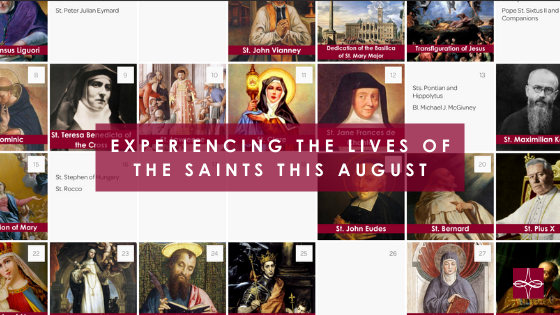

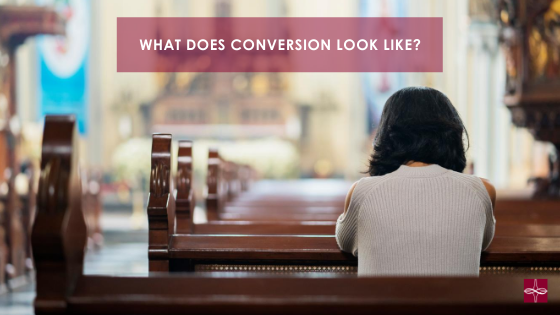

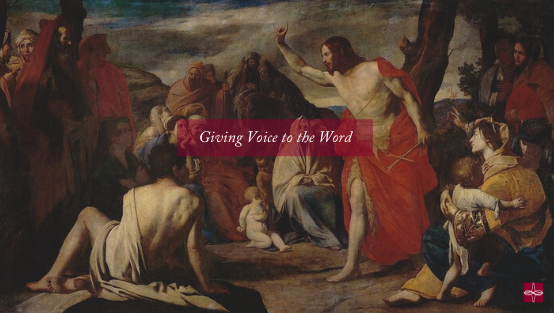

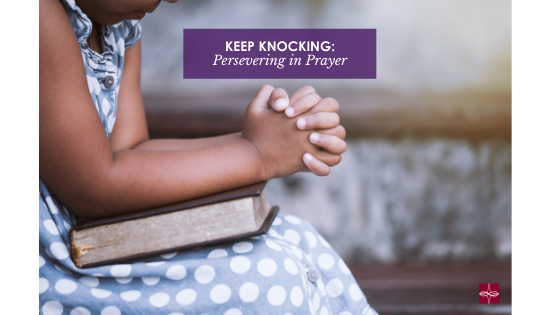

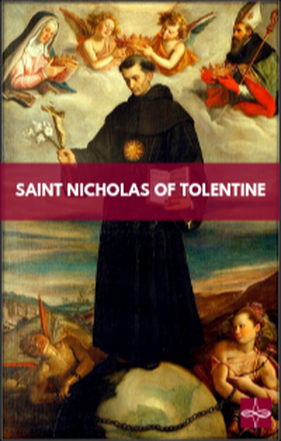

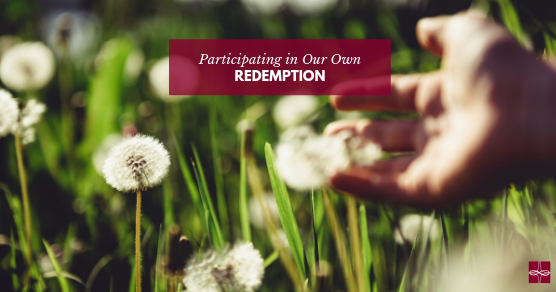

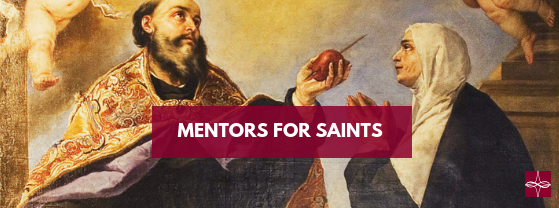

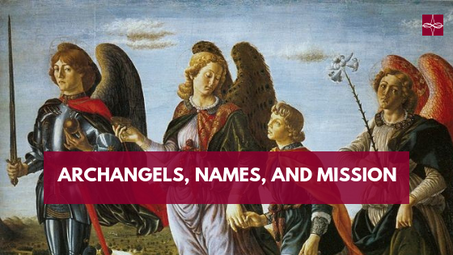

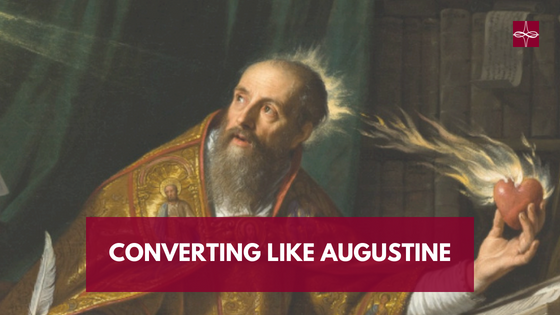

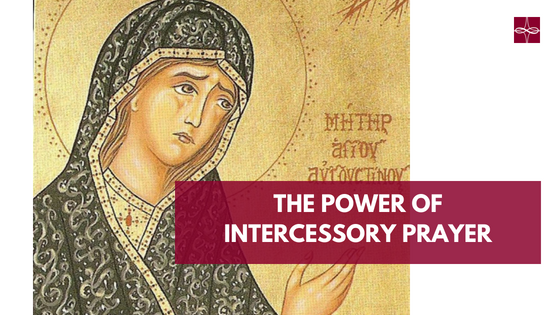

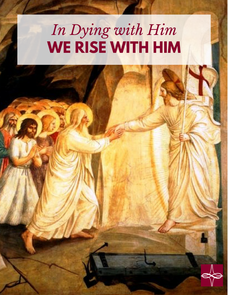

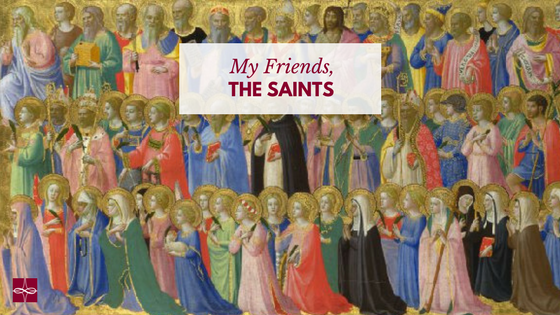

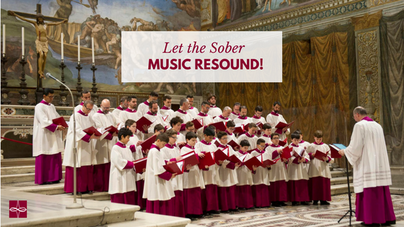

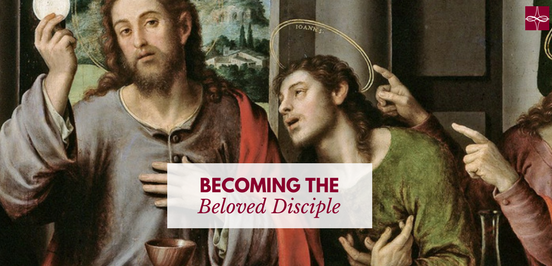

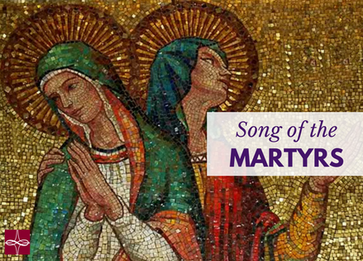

 RSS Feed
RSS Feed